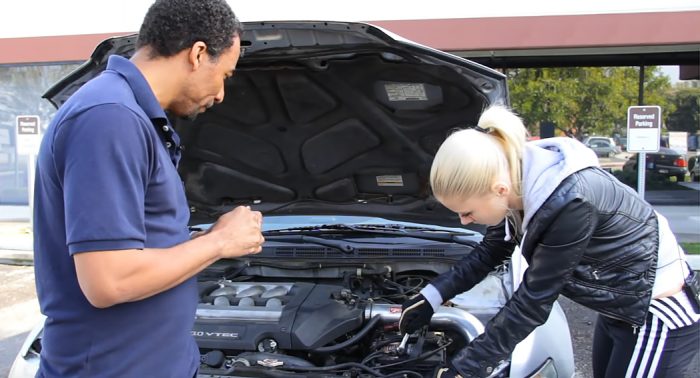Modern cars have many sensors that keep track of everything from tire pressure to the temperature of the engine. These sensors send information to the dashboard, where warning lights will appear if anything seems to be amiss. Every car’s dashboard is a little different, but almost all modern vehicles have the same or similar warning lights for serious vehicle malfunctions. Read on to find out what they mean.
Oil Pressure Warning
This warning light looks a little like an oil lamp. It means the oil pressure in the vehicle is low, indicating that the engine may not be getting the lubrication it needs. Make sure to refill the oil as soon as possible, ideally immediately, and find out how to deal with a car burning oil online. Lack of adequate lubrication can cause the engine to seize.
Engine Temperature Warning

The engine temperature warning indicates that the car is overheating. It looks like a thermometer floating upright on top of the water. Pull off the road immediately if this light comes on and check the vehicle’s coolant level, fan, and radiator cap. Allowing the engine to overheat can lead to a blown head gasket, leaving the vehicle incapacitated and requiring drivers to replace the engine, so never ignore this light.
Battery Charge Warning

The battery charge warning light looks like a simplistic drawing of a battery with its positive and negative terminals marked. When the light comes on, it means the car isn’t getting sufficient electrical power. Some drivers assume immediately that the problem is with the battery itself, but the underlying issue may actually be the alternator. It’s best to head to a mechanic for a diagnostic check or take it to an auto parts store for battery and alternator testing as soon as possible, as there’s no telling when the battery might give out and leave drivers with no power steering, power brakes, or lights.
Brake Warning Light
The brake warning indicator comes on for two reasons. Either the driver hasn’t disengaged the emergency brake yet or there’s something seriously wrong with the vehicle’s braking system. Common problems that cause brake warning lights to be continuously on can include uneven hydraulic pressure and dangerously low fluid levels in the master cylinder, both of which make cars unsafe to drive.
Safety Lights
Safety lights can be either red or yellow. Safety lights include the ubiquitous fasten seat belt light, the low tire pressure indicator, and the check engine light. While they’re just as serious in some ways as warning lights, safety lights don’t always indicate that something is about to go catastrophically wrong.

Some modern vehicles have a whole host of extra safety lights ranging from oil change reminders to indicators that show when the road is icy, the child safety lock is on, or the driver is getting too close to another car. Since modern cars may feature a dozen or more warning lights, and those lights differ substantially between vehicles, it’s wise for drivers to familiarize themselves with their vehicles’ manuals before taking them out on the road.
The Bottom Line
A vehicle’s dashboard lights are designed to let drivers know when something is amiss. When in doubt, it’s always better to pull off and discover exactly what is prompting the warning light than to ignore it. It could prevent an accident.








